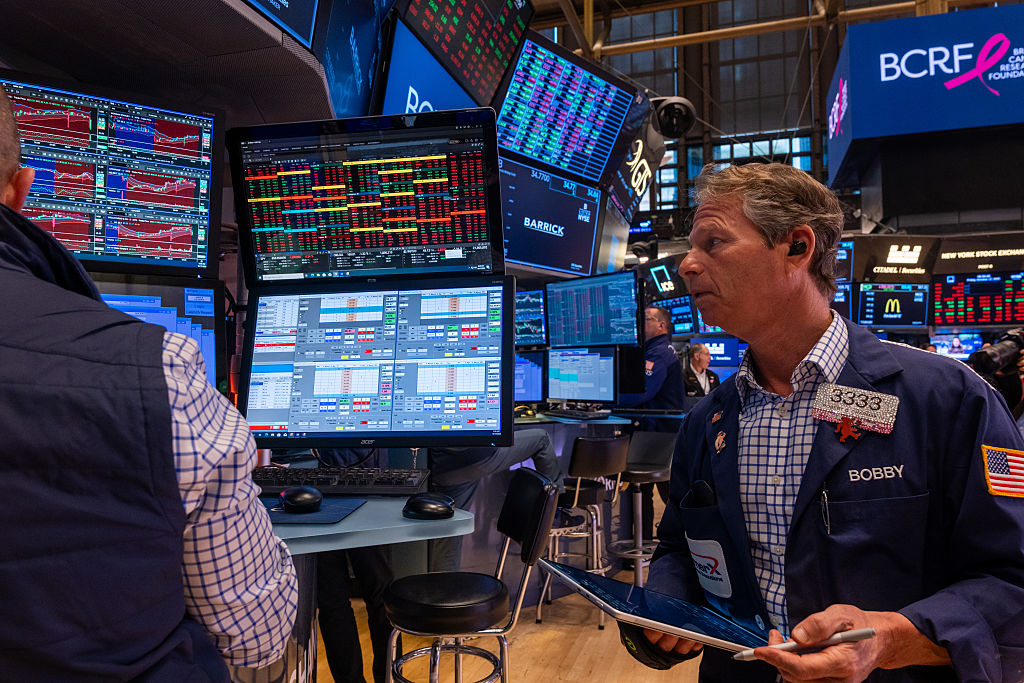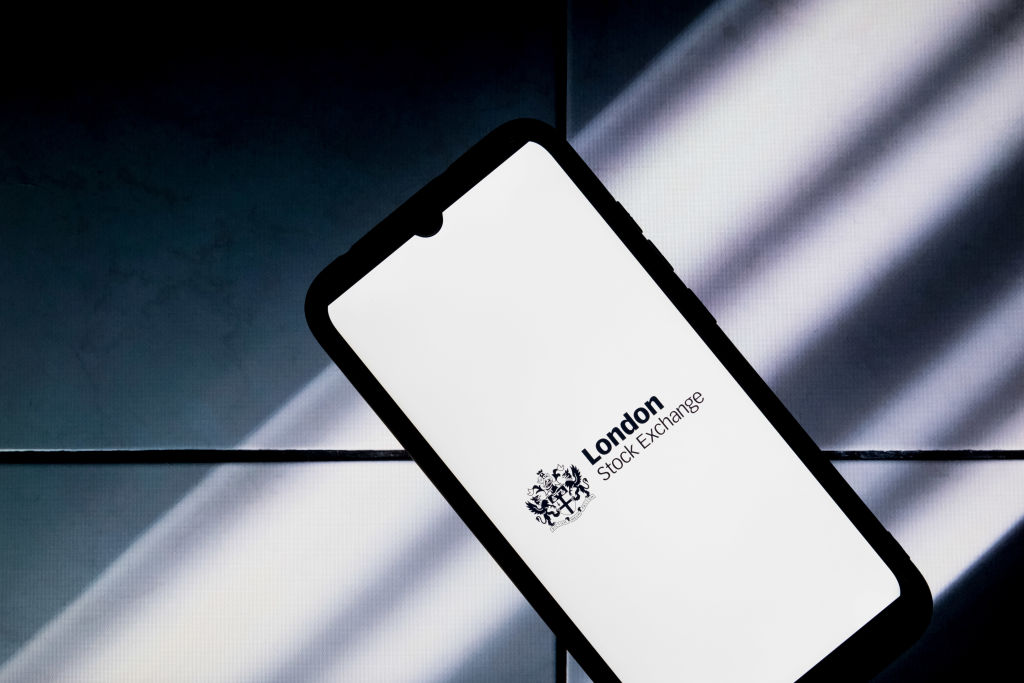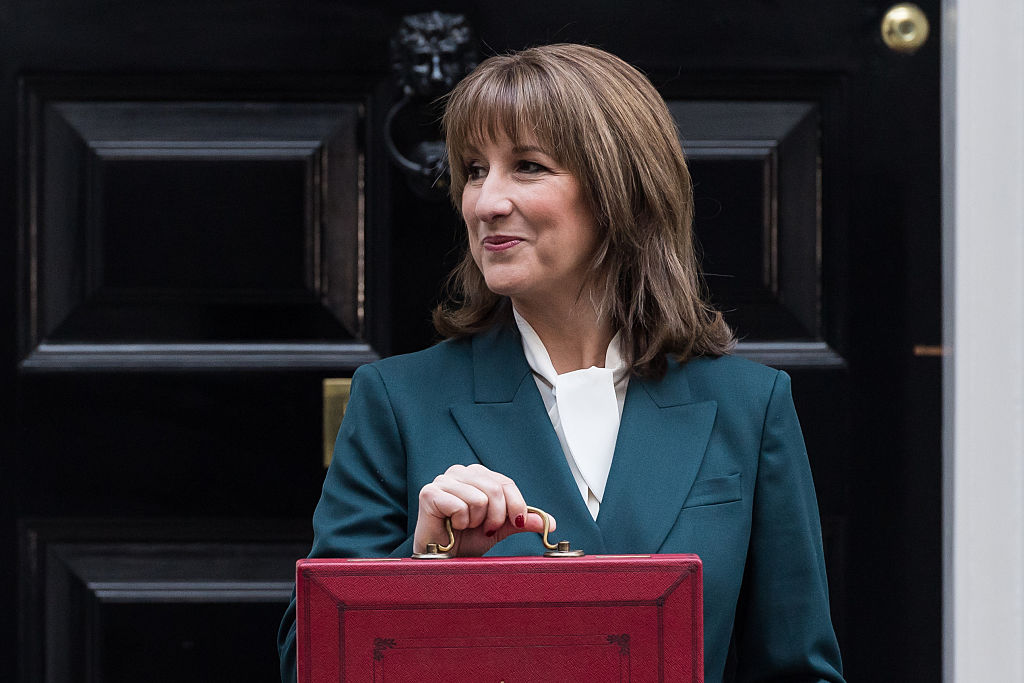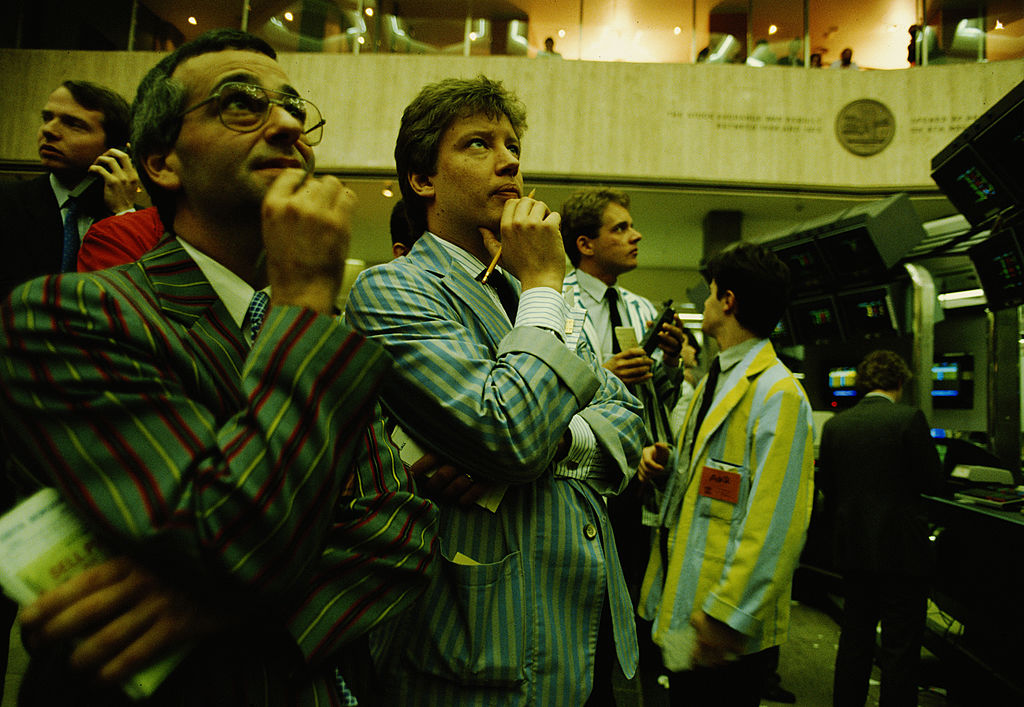Debt funds finally have their day in the sun – how to invest
Investors can now earn equity-like returns from debt funds and with less risk


In the world of bonds and fixed income, US billionaire Howard Marks is a titan. After making a name for himself at Citicorp in the 1970s and then TCW Group in the 1980s trading distressed bonds, he founded Oaktree Capital Management in 1995, focusing on high-yield debt, distressed debt and private equity. Today, Oaktree manages about $200 billion in assets for its clients across distressed-debt and private-equity funds. Over the years, Marks, one of the most successful debt investors of all time, has become famous for his so-called investment “memos”. These are emailed to clients and posted online, and contain his thoughts on everything from the state of the markets to the economy and even family life.
With 55 years of experience behind him, Marks has witnessed multiple investment markets and cycles, including crashes, inflation peaks, interest-rate cycles and booms. His memos have become particularly poignant in the last few years as he is one of the handful of remaining fund managers who experienced the rate-hiking and inflationary periods of the 1970s and 1980s.
In October 2023, in a memo titled “Sea Change”, Marks discussed the shifting landscape for bond and equity returns, and noted that higher interest rates have diminished the traditional advantage of stocks over bonds. “Where the S&P 500 has returned about 10% annually for the last century, the ICE BofA US High Yield Constrained index now offers about the same,” he wrote. “In other words, expected pre-tax yields from non-investment-grade debt investments now approach or exceed the historical returns from equity.” That is indeed a sea change. Since 2023, investors have been able to lock in high single-digit and double-digit returns on debt without taking on anywhere near as much risk as with equities.
MoneyWeek
Subscribe to MoneyWeek today and get your first six magazine issues absolutely FREE

Sign up to Money Morning
Don't miss the latest investment and personal finances news, market analysis, plus money-saving tips with our free twice-daily newsletter
Don't miss the latest investment and personal finances news, market analysis, plus money-saving tips with our free twice-daily newsletter
Debt trumps equity
When discussing investments, equities often take centre stage, but global debt markets are far larger, more diverse and more significant to the global economy. According to the Institute of International Finance (IIF), global debt reached a record high of more than $324 trillion in the first quarter of 2025 – that’s around three times the size of the entire market capitalisation of all global equity markets.
Around a third of this is sovereign and corporate-bond debt, debt that’s publicly tradeable in the same way as equity (although there are a few key differences). Other types of private debt include direct lending and mortgage debt (often referred to as mortgage-backed securities), to name but a few. Data from the Bank of England show that since 2008, nearly all of the £425 billion net increase in UK corporate debt has come from market-based finance – money directly from investors, including investment funds, insurers, wealthy individuals, hedge funds and private equity. The most significant chunk of funding is from so-called syndicated loans. A syndicated loan is financing offered by a syndicate, a group of lenders that work together to provide funds for a borrower. To look at all the different types of debt and how they work, as well as which firms specialise in lending, would be too much for this article, but suffice to stay that there’s a different lender and different type of loan for every situation.
Howard Marks and Oaktree have carved out a niche in the distressed-debt section of the market. When a bond or a loan is first issued, it’s issued at what is known as “par”. This is generally a round number such as £1,000 or £100,000. This is both the issue price and the redemption price. Bonds are issued at a round number and then repaid at the same number. Prices are then quoted in pennies or cents and this gives an indication of what the market thinks about the instrument. For example, if a bond is trading at 97p on the £1, it indicates that the market believes it will be repaid in full. However, if the value of the bond slumps to, say, $0.30 on the $1, that’s a strong indication the market believes the bond won’t be repaid in full. Bonds trading at a significant discount to their issue price are generally described as being distressed. Transactions can be conducted at any point between the parties that own the bonds, even the company itself. Oaktree, for example, may come in and buy a bond at $0.10 on the $1. As a distressed-debt investor, it buys in the hope it will be able to generate some sort of profit either in a bankruptcy situation, or if the business makes a strong recovery.
A rough guide to bonds
Bonds have a stronger claim on a company’s assets than equity does. The most senior debt type is generally the senior secured first-lien, then there’s the secured second-lien loan, senior unsecured debt, senior subordinated, subordinated and junior subordinated. Other types of debt may exist below these senior debts, but in the worst-case scenario, these are the ones that are going to be paid first. Senior secured debt is both higher in the capital structure and secured against an asset, so if a company should fail, the security of that asset, such as a large warehouse, can be used to pay off the bond. Oaktree may come in and acquire a senior secured bond at pennies on the dollar from another debt holder and then pursue the company through the courts to reclaim the asset and potentially achieve a return of multiple times its initial investment.
That’s a rough guide to the trading value of bonds and the seniority of capital structures. The other core component of a bond or loan is the interest rate paid to investors. In many respects, the interest rate on a bond or loan tells investors more about the quality of the debt than the price. Pricing the interest rate on debt is somewhat of a fine art and will often depend on the quality of the debt, the level of debt in the capital structure and the position of the borrower, whether the debt is secured or not, and the duration of the debt as well as the firm’s credit rating.
A credit-rating agency such as Standard & Poor’s, Moody’s and Fitch Ratings are usually paid to assess the risk of every credit instrument and give a rating of credit quality. AAA is generally the highest (each agency has a slightly different system); C or D are the lowest ratings. The credit rating will affect the bond’s price and the interest-rate spread. The spread relates to the interest rate offered on the debt compared with a fixed benchmark, often referred to as the “risk-free rate”, such as the Bank of England base rate, or, more commonly, a US treasury of the same duration (the number of years outstanding: a ten-year Treasury vs a ten-year bond, for example). The wider the spread, the more risky the debt instrument is perceived to be.
Interest rates are set when the bond is issued, but prices and rates move inversely as the bond trades. If the price of the bond falls, the interest rate, which is set based on the issue price, will rise. For example, a £100 bond with a 5% yield will pay out £5 in interest a year. That won’t change, but the price could fall to £80 (80p on the £1). The £5 annual interest remains unchanged, which means investors purchasing at the lower price are buying with a yield of 6.3%. The same happens if the price of the bond rises above par, although in that case, the yield will decline.
Interest rates themselves can be fixed or variable. A fixed interest rate, often referred to as a “fixed coupon rate”, means that the bond issues a constant, predetermined interest payment (coupon) at regular intervals (semi-annually, for example) throughout its entire life, from issuance until maturity. A floating interest-rate bond, or “floater”, is a debt instrument whose coupon payments are not fixed, but rather adjust periodically (quarterly or semi-annually, for example) based on a benchmark interest rate plus a specified spread. Common benchmarks include the Secured Overnight Financing Rate (SOFR) or the Euro Interbank Offered Rate (EURIBOR).
Understanding the key risks
This, in a nutshell, is how bonds, loans and credit instruments work. When trying to understand the risk associated with any particular credit investment, investors only need to be concerned with two metrics: duration risk and credit risk. Credit risk, also known as default risk, represents the likelihood of the issuer making timely interest payments and repaying the principal amount at maturity. It’s the risk that the bond issuer will fail to meet its financial obligations. Duration risk is a measure of a bond’s price sensitivity to changes in interest rates. The longer a bond’s duration, the more sensitive its price will be to interest-rate fluctuations.
Austria’s 100-year bond, which launched at the peak of the zero-interest rate era, is the best example of duration risk. The bond was issued at par with a yield of 0.9%, with a modified duration of 40%. That means that for a 100bps increase or decrease in yield, the bond price moves by 40%. As interest rates have surged, the value of the bond has fallen by nearly 70%. Investors who are able to hold until maturity in 100 years’ time will still see redemption at par, but anyone selling today will have to stomach a 70% loss of principal (the yield has risen to 2.6%). Short-term bonds and those credit instruments with floating interest rates have the lowest duration risks. Long-term fixed-rate products have the highest duration risk.
Despite the size of the credit and debt markets, these areas are usually out of reach of individual investors. Wholesale bonds, typically traded by institutional investors, often have minimum denominations of £100,000, and most brokers won’t even bother dealing with trades below several million pounds in size. The more esoteric debt instruments, where the best returns and opportunities can be found, aren’t usually publicly traded. However, there’s a range of investment trusts that specialise in just this area, and right now investors can build a portfolio of credit with a near double-digit yield and reduced down-side risk compared with an equity portfolio.
The investment trusts to buy now
Investment trusts are perfectly suited to holding different types of debt, especially in situations where there isn’t a liquid market. There are 24 listed debt and lending trusts and, of these, nine have less than £100 million in assets under management and don’t really have the scale needed to compete effectively. GCP Infrastructure Investments (LSE: GCP), Sequoia Economic Infrastructure (LSE: SEQI) and BioPharma Credit (LSE: BPCR) are the largest.
GCP and Sequoia both specialise in lending to infrastructure projects. Sequoia, the largest of the two, has an average investment of £23.7 million with a weighted average maturity of 3.5 years. Just under two-thirds of the debt is senior and secured against an asset, with 41% on floating interest rates. The floating-rate nature of the portfolio, coupled with the relatively short duration of assets, means duration risk is relatively low. It’s an active trader of assets when opportunities emerge. For example, it recently acquired the bonds of Navigator Holdings, a market-leading owner and operator of liquefied gas carriers, owning 56 vessels, at 7.25% – 10/2029 bonds for $8.0 million. That’s a small holding for the portfolio, but it’s an attractive debt play that’s not available to the average investor.
Sequoia’s portfolio has a much shorter duration compared with GCP, with the average life of GCP’s investments standing at 11 years. With the shorter lifespans in the portfolio, Sequoia has been able to recycle its assets into higher-yield investments to take advantage of the changing interest-rate environment and, on a purely net-asset-value basis, Sequoia does offer the higher yield. At the end of May Sequoia’s net asset value (NAV) stood at just under 92p per share, suggesting the shares are currently trading at a discount of 14%. The yield is just under 9%. GCP’s last-reported NAV is around 102p, but it’s trading down at 74p, a discount of nearly 30%. This is a reflection of the long-duration of the assets. With a target annual dividend of 7p, the stock yields around 9.5%.
BioPharma Credit is managed by Pharmakon Advisors, LP, a specialist $10 billion biotechnology investor that’s been around since 2009. BioPharma lends money to small and mid-sized companies in the life-sciences sector. As Pedro Gonzalez de Cosio, co-founder and chief executive officer of Pharmakon Advisors, said earlier this year, this is a niche but lucrative market if you get it right. These businesses have “a monopoly in treating a certain disease in a certain way… but most of these companies are at a stage where they are probably still investing more in launching the product… So they have these assets worth a lot of money, but they’re still burning cash”.
At the end of January, just over 60% of the portfolio was allocated to just three senior loans (to three separate companies). However, as Pedro argued, the portfolio shouldn’t be viewed in isolation. “I can guarantee you that [by] investing in us [you] diversify your portfolio because there is no other way that you can get access to these assets.” The bulk (76%) of the portfolio is floating rate, to be repaid within two years at interest rates of between 8% and 12%. And companies generally commit to additional payments if the bonds are repaid earlier than scheduled. That’s helped the trust pay around 50% more in special dividends than was initially projected at its initial public offering. At the end of May the trust was trading at a discount to net asset value of 12.8% and offered a dividend yield of 11.6%.
There are two debt trusts managed by TwentyFour Asset Management, a boutique manager of the Swiss-based Vontobel Group. The UK-based boutique manages £23 billion, of which Twenty Four Income (LSE: TFIF) accounts for about £850 million and TwentyFour Select Monthly Income (LSE: SMIF) makes up £250 million. The larger trust is a rarity among UK investment trusts in that it currently trades at a premium, and it’s been issuing new stock to take advantage of strong demand for the shares. A total of 42% of its portfolio is in residential mortgage-backed securities (RMBS) and the rest of the portfolio is a mix of other securities, such as student loans and commercial mortgage-backed securities (CMBS). These assets, which are a bit further up the risk curve than the senior and secured loans typically held by other trusts, offer more in the way of yield. At the end of May, the average yield of the portfolio was close to 12%. Over the past year, the company has paid a dividend yield of 11p per share, boosted by higher interest rates as its portfolio has rolled over, a dividend yield of around 10% on the current share price.
CVC Income & Growth (LSE: CVCG) is part of the private-equity giant CVC Group. Overall, the CVC Group has €200 billion of assets under management and buys high-yielding sub-investmentgrade loans in the direct lending market. Like TwentyFour, this market can be perceived to be a bit riskier than other loan and debt markets, but CVC is very careful about where it puts its investors’ money. “We attach at a 50% loan-to-value [ratio],”
Mitchell Glynn, the assistant portfolio manager, said and “80% is secured…we are a secured investor,” he adds. As a result, “there’s a big equity cushion below us, so there’s protection if something goes wrong”. Often, CVC is lending money to companies that have been shut out of other markets, which means the fund can charge 12%-13% or more to borrowers. If it’s able to buy debt on the open market at a discount, returns are even higher.
That’s happening a lot right now as highly leveraged firms are struggling in the higher-rate environment. There’s an “abundance of opportunities”, but there’s also an “abundance of toxic opportunities”, says Glynn. The fund is also trading at a premium and has been raising money to take advantage of the increased demand for its shares. The company is guiding for 9.25p per share in dividends over the coming year, giving a dividend yield of 7.8%, although it’s likely to top this up with special dividends. However, this isn’t just an income play – over the past five years, CVC’s debt-trading strategy has helped it generate both income and capital growth. The trust has generated an annualised total return of 16.7% over the past five years, with a total return of 29.2% last year for the sterling shares and 18.1% in 2023.
This article was first published in MoneyWeek's magazine. Enjoy exclusive early access to news, opinion and analysis from our team of financial experts with a MoneyWeek subscription.
Get the latest financial news, insights and expert analysis from our award-winning MoneyWeek team, to help you understand what really matters when it comes to your finances.

Rupert is the former deputy digital editor of MoneyWeek. He's an active investor and has always been fascinated by the world of business and investing. His style has been heavily influenced by US investors Warren Buffett and Philip Carret. He is always looking for high-quality growth opportunities trading at a reasonable price, preferring cash generative businesses with strong balance sheets over blue-sky growth stocks.
Rupert has written for many UK and international publications including the Motley Fool, Gurufocus and ValueWalk, aimed at a range of readers; from the first timers to experienced high-net-worth individuals. Rupert has also founded and managed several businesses, including the New York-based hedge fund newsletter, Hidden Value Stocks. He has written over 20 ebooks and appeared as an expert commentator on the BBC World Service.
-
 The graphene revolution is progressing slowly but surely
The graphene revolution is progressing slowly but surelyEnthusiasts thought the discovery that graphene, a form of carbon, could be extracted from graphite would change the world. They might've been early, not wrong.
-
 How Javier Milei led an economic revolution in Argentina
How Javier Milei led an economic revolution in ArgentinaFollowing several setbacks, Argentine president Javier Milei's pro-market reforms have been widely endorsed in a national poll. Britain will need the same
-
 A reckoning is coming for unnecessary investment trusts
A reckoning is coming for unnecessary investment trustsInvestment trusts that don’t use their structural advantages will find it increasingly hard to survive, says Rupert Hargreaves
-
 Literacy Capital: A trust where great returns fund a good cause
Literacy Capital: A trust where great returns fund a good causeThere’s plenty to like about specialist private-equity trust Literacy Capital, says Max King
-
 How to harness the power of dividends
How to harness the power of dividendsDividends went out of style in the pandemic. It’s great to see them back, says Rupert Hargreaves
-
 Tetragon Financial: An exotic investment trust producing stellar returns
Tetragon Financial: An exotic investment trust producing stellar returnsTetragon Financial has performed very well, but it won't appeal to most investors – there are clear reasons for the huge discount, says Rupert Hargreaves
-
 How to capitalise on the pessimism around Britain's stock market
How to capitalise on the pessimism around Britain's stock marketOpinion There was little in the Budget to prop up Britain's stock market, but opportunities are hiding in plain sight. Investors should take advantage while they can
-
 The consequences of the Autumn Budget – and what it means for the UK economy
The consequences of the Autumn Budget – and what it means for the UK economyOpinion A directionless and floundering government has ducked the hard choices at the Autumn Budget, says Simon Wilson
-
 Profit from a return to the office with Workspace
Profit from a return to the office with WorkspaceWorkspace is an unloved play on the real estate investment trust sector as demand for flexible office space rises
-
 An “existential crisis” for investment trusts? We’ve heard it all before in the 70s
An “existential crisis” for investment trusts? We’ve heard it all before in the 70sOpinion Those fearing for the future of investment trusts should remember what happened 50 years ago, says Max King